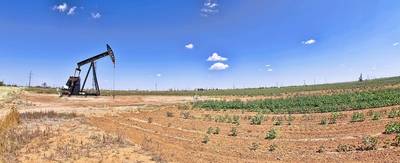OPEC Sees Slower 2019 Oil Demand Growth, Warns on Economy
OPEC on Wednesday further trimmed its forecast for 2019 global oil demand growth and said the risk to the economic outlook was skewed to the downside, adding a new challenge to the group's efforts to support the market next year.
In a monthly report, the Organization of the Petroleum Exporting Countries said world oil demand next year would rise by 1.41 million barrels per day (bpd), 20,000 bpd less than last month and the second consecutive reduction in the forecast.
The report provides further indication the rapid oil demand that helped OPEC and allies get rid of a supply glut will moderate in 2019. OPEC last month said global growth faced "numerous challenges", although its latest report suggests concern about them has deepened.
"Rising challenges in some emerging and developing economies are skewing the current global economic growth risk forecast to the downside," OPEC said in the report.
"Rising trade tensions, and the consequences of further potential monetary tightening by G4 central banks, in combination with rising global debt levels, are additional concerns."
Crude briefly pared gains after the OPEC report was released but later rallied to trade above $80 a barrel, a level reached earlier this year for the first time since 2014, supported by expectations for a further drop in Iranian exports.
OPEC and a group of non-OPEC countries agreed on June 22-23 to return to 100 percent compliance with oil output cuts that began in January 2017, after months of underproduction by Venezuela and others pushed adherence above 160 percent.
The economic downside risks will provide a talking point for a group of OPEC and non-OPEC energy ministers meeting on Sept. 23 in Algiers to monitor the market. The meeting could make policy recommendations.
OPEC's next meeting to set policy is not until December.
OPEC Production Rises
In the report, OPEC said its oil output rose in August by 278,000 bpd to 32.56 million bpd following the June deal.
The biggest rise came from Libya, which is exempt from the agreement. This helped offset declines in Venezuela, where production is declining due to the economic crisis, and Iran, as buyers walked away ahead of the U.S. sanctions.
This means compliance with the original supply-cutting deal has increased to 133 percent, according to a Reuters calculation, meaning members are still cutting more than promised. The original figure for July was 126 percent.
The August production rate is lower than the average demand for OPEC crude in 2018 and considerably more than will be needed next year as rivals such as the United States expand supplies.
OPEC said the world will need 32.05 million bpd from its 15 members in 2019, unchanged from last month. This suggests there will be a 500,000 bpd surplus in the market should OPEC keep pumping the same amount and other things remain equal.
The higher prices that have followed the OPEC-led deal are still prompting more growth in rival supply. OPEC said it expects non-OPEC production to expand by 2.15 million bpd next year, 20,000 bpd more than forecast last month.
By Alex Lawler








